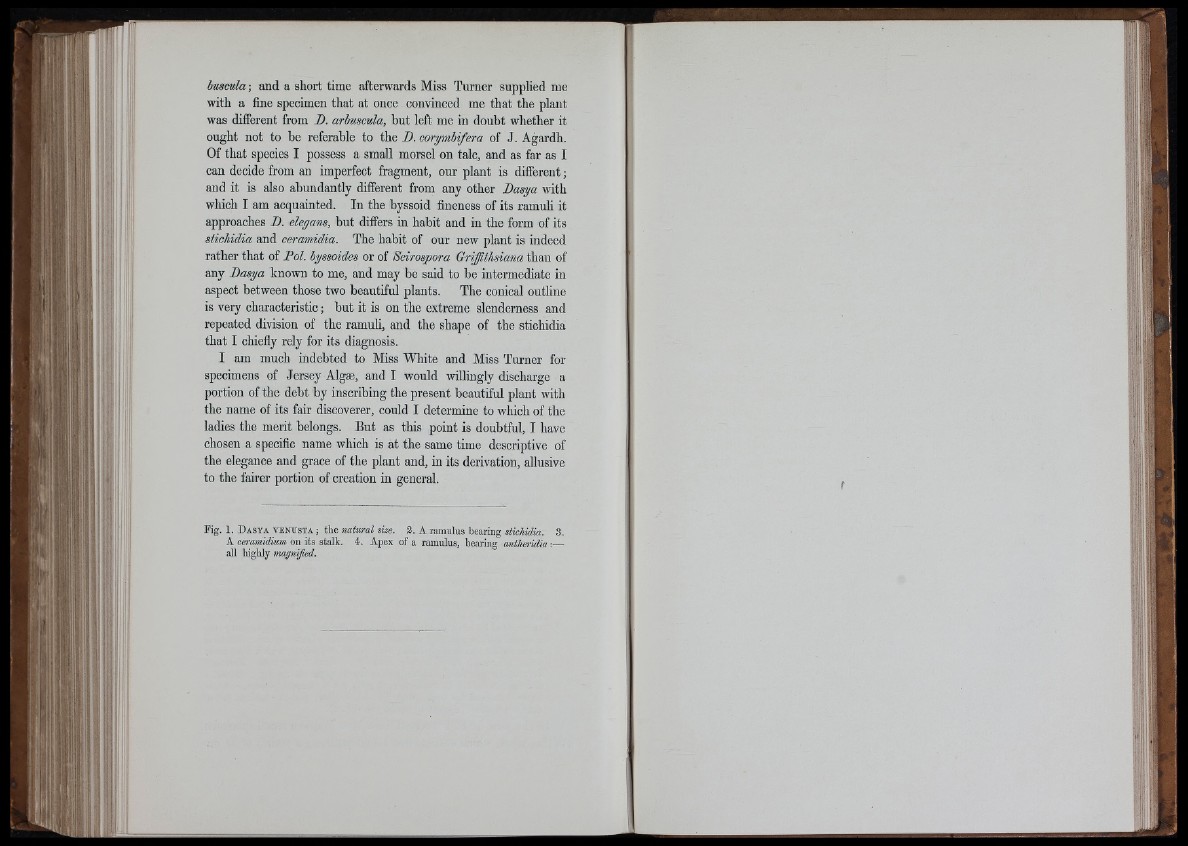
buscula; and a short time afterwards Miss Turner supplied me
with a fine specimen that at once convinced me that the plant
was diiferent from D. arbuscula, but left me in doubt whether it
ought not to be referable to the B. corymbifera of J. Agardh.
Of that species I possess a small morsel on talc, and as far as I
can decide from an imperfect fragment, our plant is different;
and it is also abundantly different from any other Basya with
which I am acquainted. In the byssoid fineness of its ramuli it
approaches B. elegans, but differs in habit and in the form of its
stichidia and ceramidia. The habit of our new plant is indeed
rather that of Pol. byssoides or of Seirospora Grifithsiana than of
any Basya known to me, and may be said to be intermediate in
aspect between those two beautiful plants. The conical outline
is very characteristic; but it is on the extreme slenderness and
repeated division of the ramuli, and the shape of the stichidia
that I chiefly rely for its diagnosis.
I am much indebted to Miss White and Miss Turner for
specimens of Jersey Algse, and I would willingly discharge a
portion of the debt by inscribing the present beautiful plant with
the name of its fair discoverer, could I determine to which of the
ladies the merit belongs. But as this point is doubtful, I have
chosen a specific name which is at the same time descriptive of
the elegance and grace of the plant and, in its derivation, allusive
to the fairer portion of creation in general.
Pig. 1. D asya v en u st a ; the natural size. 2. A ramulus bearing stichidia. 3.
A ceramidium on its stalk. 4. Apex of a ramulus, bearing antheridia :—
all higlily magnified.
r